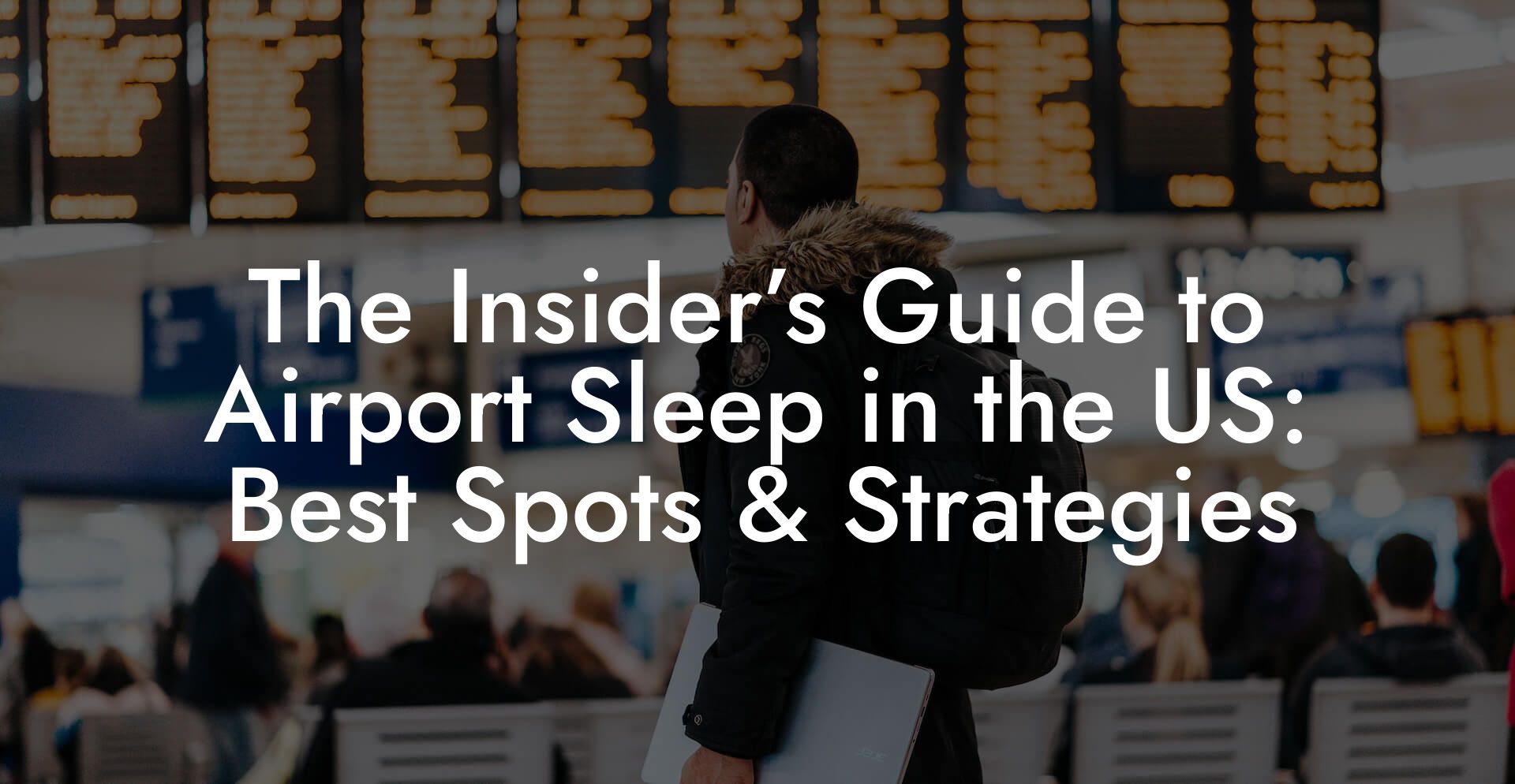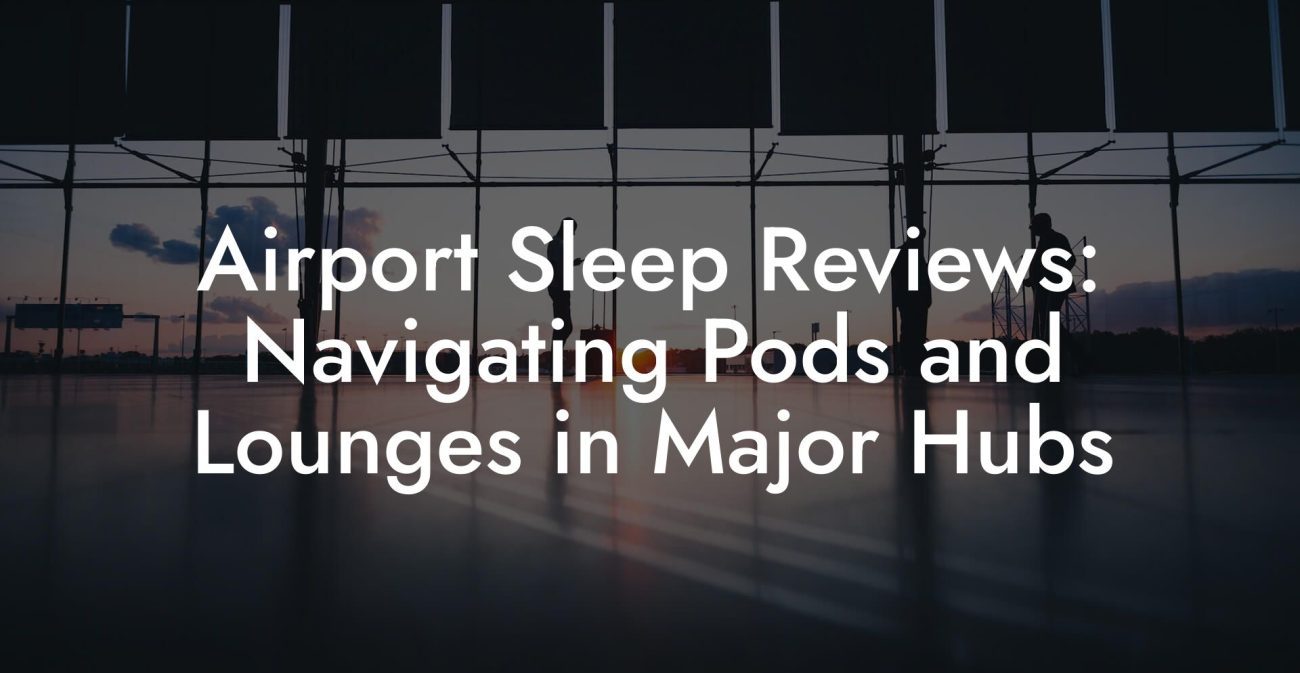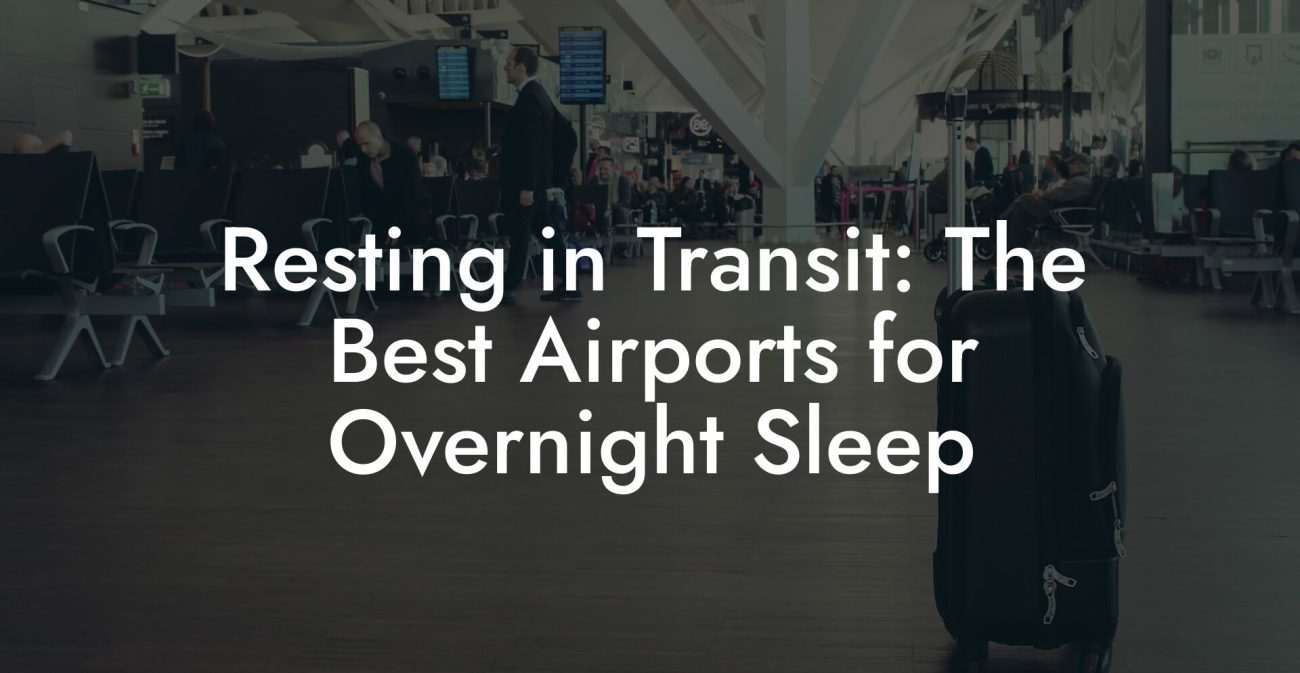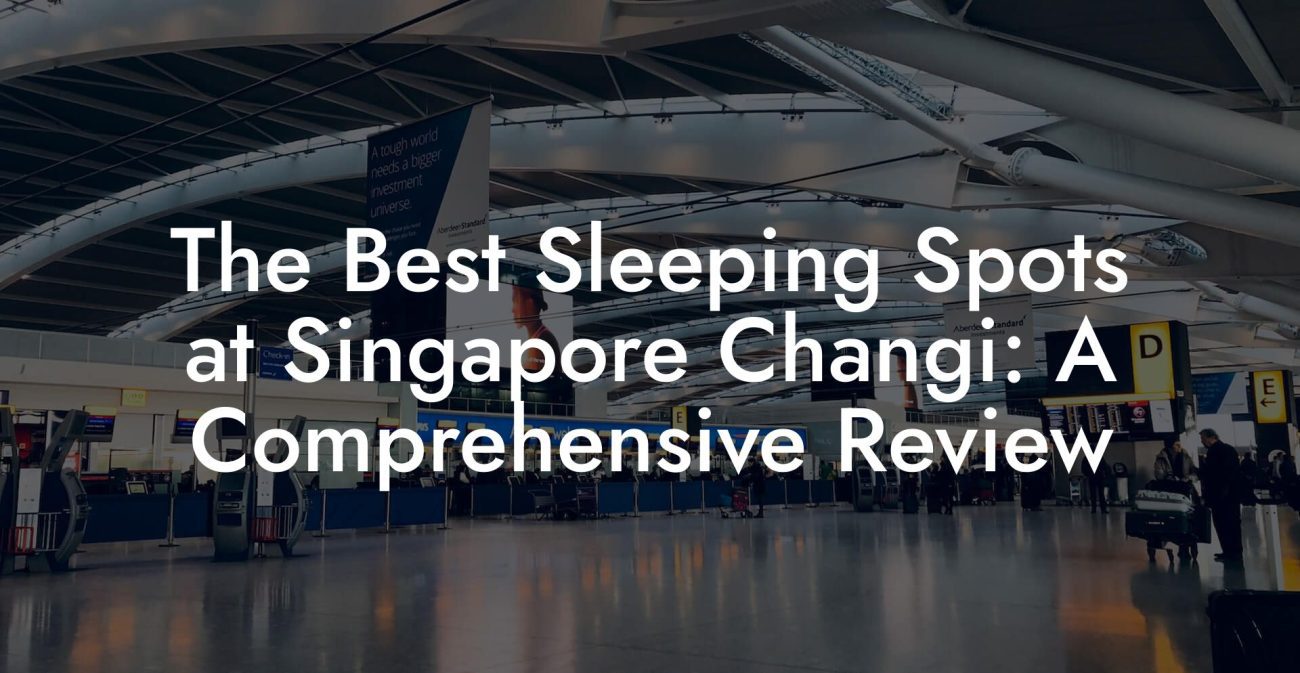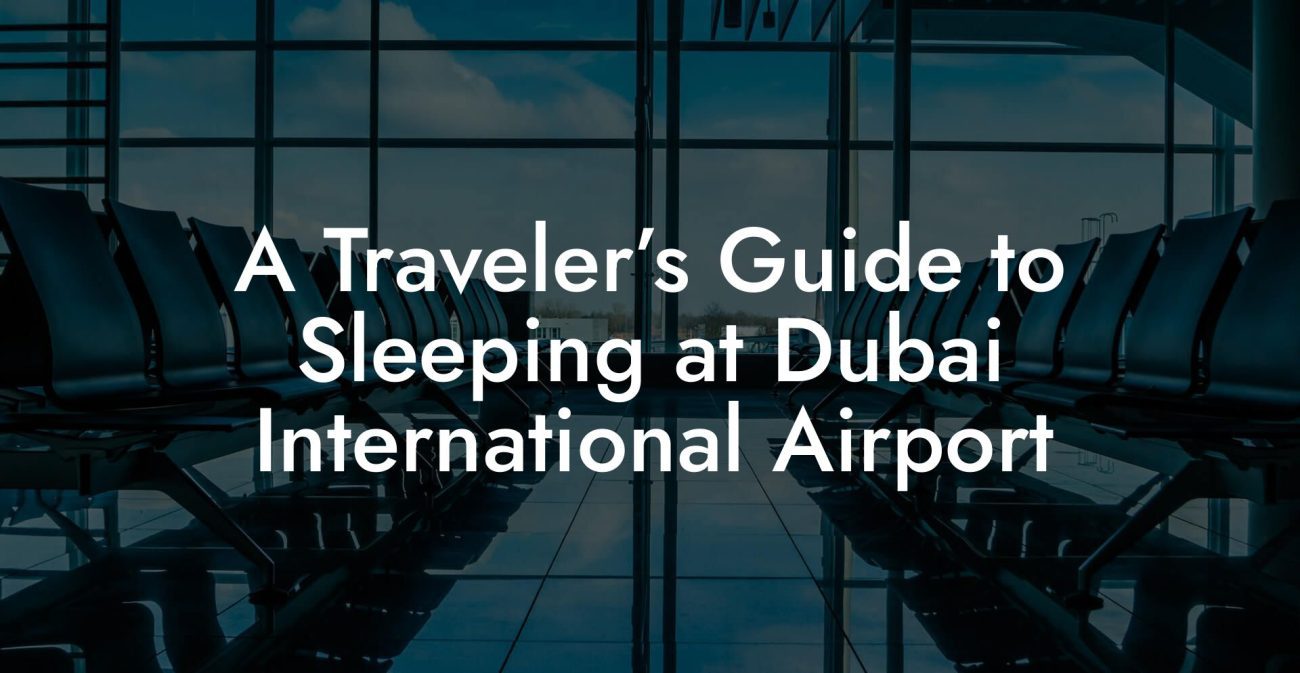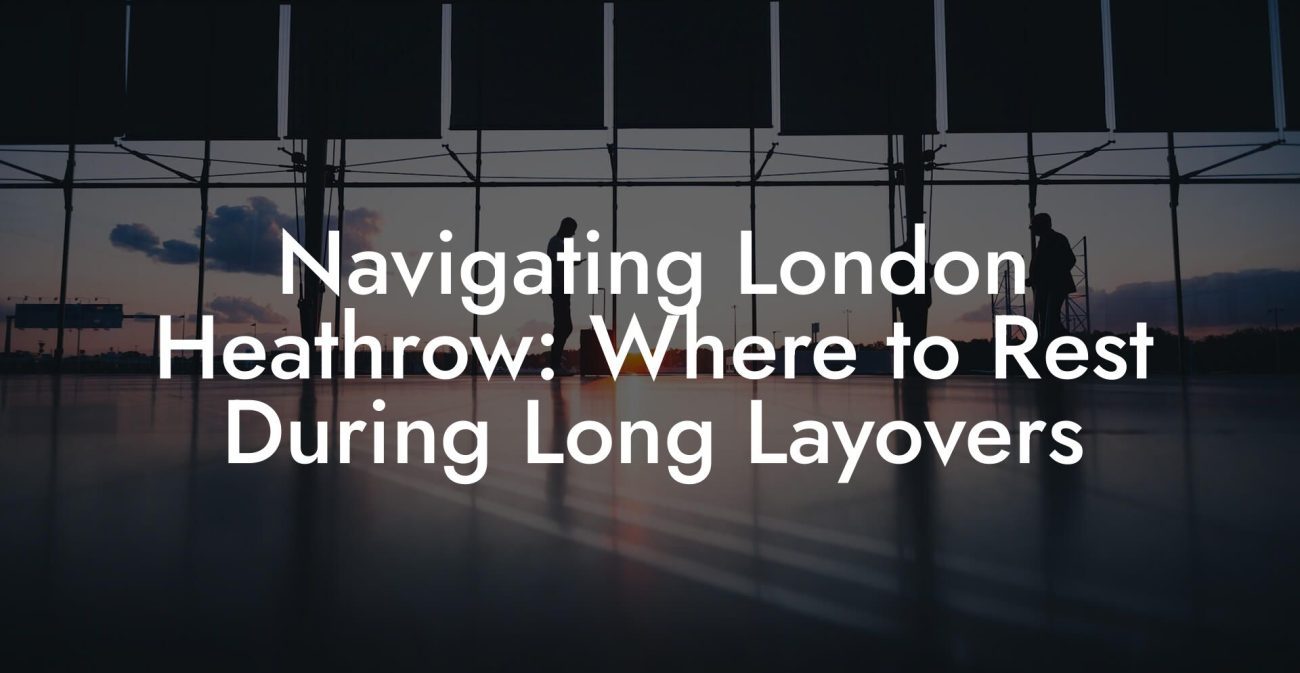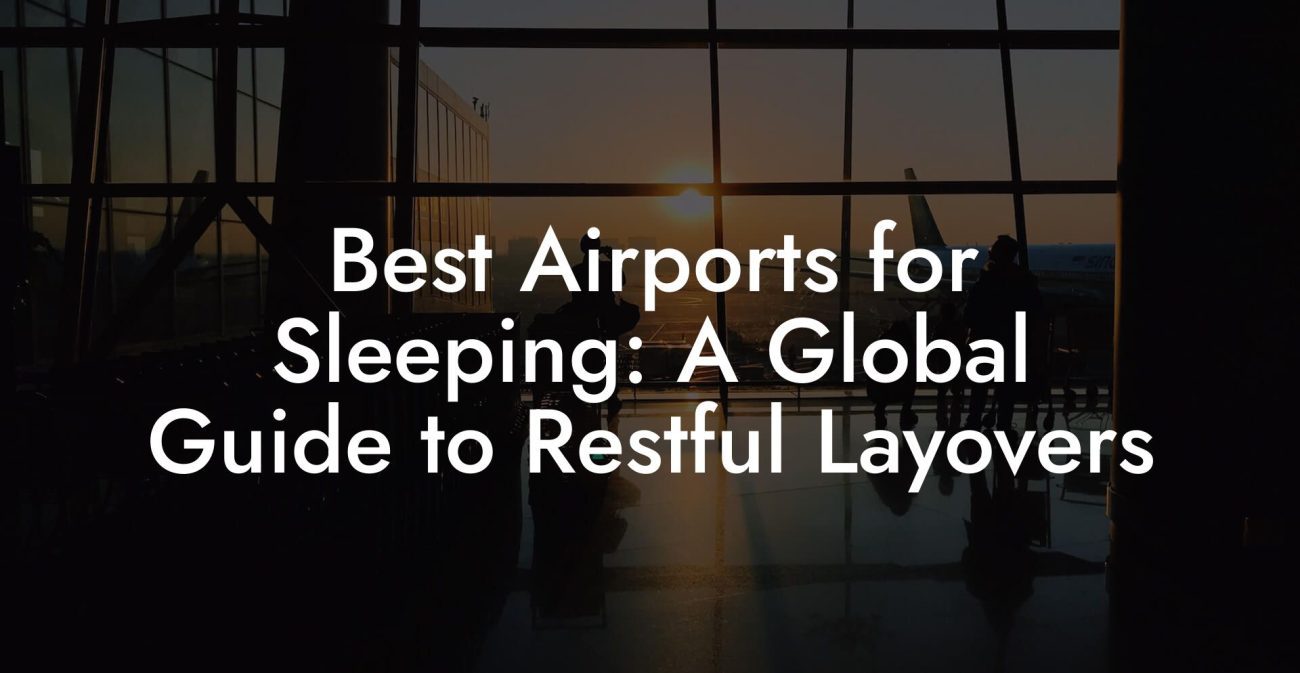Ever found yourself sprawled in a less-than-glamorous corner of an airport terminal, pondering if napping among strangers could somehow be a rad adventure? You’re not alone. This guide is your backstage pass into the secret world of airport sleep in the US—where the best spots meet savvy strategies and even those “sleeping pods” get a major shout-out. Let’s dive into the ultimate insider’s guide that transforms your next layover into an epic sleepover adventure.
Quick Links to Useful Sections
- What Exactly Is Airport Sleep and Why Should You Care?
- The Rise of the Airport Sleep Culture
- Top Airport Sleep Spots in Major US Hubs
- Hartsfield-Jackson Atlanta International Airport (ATL)
- Chicago O’Hare International Airport (ORD)
- Los Angeles International Airport (LAX)
- John F. Kennedy International Airport (JFK), New York
- San Francisco International Airport (SFO)
- Denver International Airport (DEN)
- Essential Strategies and Tips for Nailing Airport Sleep
- Plan Ahead Like a Pro
- Gear Up for Comfort
- Embrace the Art of Power Napping
- Capitalize on Sleeping Pods and Lounges
- Utilize Tech to Your Advantage
- Personalize Your Sleep Environment
- Stay Safe and Alert
- How to Maximize the Benefits of Airport Sleeping Pods
- Additional Airport Sleep Hacks You Need to Know
- Utilize Loyalty Programs and Lounge Passes
- Network With Fellow Travelers
- Take Advantage of Timed Sleep Cycles
- Stay Hydrated and Avoid Heavy Meals
- Enjoy Some In-Airport Entertainment
- Resources and Community Support: Your Next Steps
- FAQs on Airport Sleep: Your Ultimate Q&A Guide
- Your Journey to Empowered Airport Sleep Adventures
What Exactly Is Airport Sleep and Why Should You Care?
Airport sleep isn’t just a desperate attempt to catch Z’s during an awkward layover; it’s an emerging trend that marries practicality with modern nomad chic. Whether you’re a Gen-Z jetsetter or a millennial master of multi-tasking, learning how to turn a busy airport into your personal recharge zone is a game changer.
With travel costs skyrocketing and unpredictable schedules becoming the norm, airports now offer more than the usual fast food and duty-free shops. They’ve transformed into havens for those who know how to make the most out of a long layover, remote work session, or even an unexpected delay. From luxurious sleeping pods to hidden nooks perfect for a power nap, figuring out the art of airport sleep means you can hit refresh with ease.
In a world where every minute counts and every dollar matters, mastering the strategy behind airport sleep adds a dash of spontaneity and efficiency to your travel routine. So, buckle up—because we’re about to spill the secrets of where, when, and how to catch some quality shut-eye amid the terminal chaos.
The Rise of the Airport Sleep Culture
Gone are the days when airport sleep was synonymous with uncomfortable bench-sleeping or awkward encounters with fellow weary travelers. The evolution of travel has ushered in an entirely new culture that values rest, relaxation, and efficiency even in transient spaces. Today’s savvy traveler knows that a well-timed nap can transform a grueling travel experience into a refreshing break.
What’s driving this trend? For many, it’s all about maximizing productivity while minimizing travel weariness—a concept that resonates with tech-savvy, always-on-the-go millennials, and digital nomads. With the rise of remote work, flexible schedules, and the gig economy, more and more travelers are embracing the idea of “mobile living” where the airport becomes an extension of their personal space.
This new-age culture isn’t just about squeezing in a quick nap; it’s about rethinking travel fuelled by innovation and community. Airlines and airports are catching on too, investing in sleep pods, quiet zones, and upgraded lounges to meet the demands of modern itinerants. In doing so, they’re turning long layovers and delays into opportunities for rest and rejuvenation.
Top Airport Sleep Spots in Major US Hubs
Ever wondered which US airports are your best bet for snagging a sweet nap spot? We’ve scoped out the ultimate locations that combine comfort, safety, and a dash of cool factor.
Hartsfield-Jackson Atlanta International Airport (ATL)
Atlanta’s ATL is more than just a bustling transit hub—it’s a sleeping haven for the savvy. With upgraded lounges offering reclining chairs, and designated rest zones, ATL gives you plenty of options to catch those coveted Z’s.
- Concourse Comfort Zones: Many terminals now feature designated quiet areas furnished with comfortable seating and soft lighting—ideal for a quick power nap.
- VIP Lounges: If you’re willing to splurge or have a lounge membership, the VIP lounges here provide even more privacy and often include complimentary showers to freshen up before your next flight.
- Modern Sleeping Pods: Keep an eye out for innovative sleeping pods designed for travelers who craved a bed-like experience without leaving the terminal.
Chicago O’Hare International Airport (ORD)
Chicago’s ORD is the playground for frequent flyers seeking the ultimate airport sleep experience. Known for its expansive terminal parks and restful seating, ORD caters to the modern traveler with approved chill-out zones and futuristic nap capsules.
- Resting Rooms: Certain terminals feature “rest zones” equipped with reclining seats and subdued ambiance, perfect for a quiet escape.
- Pod Perfection: ORD has been at the forefront of integrating futuristic sleeping pods that provide a private space, ergonomic support, and, yes, even charging ports for your devices.
- Transition Areas: Transitional spaces near gates often have comfortable seating corners with less foot traffic, an ideal hideaway for a stealthy snooze.
Los Angeles International Airport (LAX)
LAX stands out with its trendy vibe and dedication to an enhanced traveler experience. With an emphasis on creativity and innovation, LAX has embraced the airport sleep concept like no other.
- Sleek Sleep Pods: Offering futuristic aesthetics and high-tech comfort, these pods are designed to deliver a hotel-like experience in the heart of the airport.
- Quiet Zones: Some terminals are now equipped with designated quiet areas that come complete with ambient noise control, dim lighting, and air purifiers to provide an oasis of calm.
- Lounge Alternatives: Besides the upscale lounges, several public areas feature wall-to-wall seating, making them convenient for the budget-conscious napper.
John F. Kennedy International Airport (JFK), New York
JFK is a melting pot of cultures and styles—and that includes sleeping strategies. Amid the buzz of New York City, JFK has carved out spaces that cater to those who relish a bit of urban adventure flavored with comfort.
- Cultural Corners: Some terminals incorporate art installations and mellow music zones that create a soothing atmosphere, perfect for a rejuvenating siesta.
- Sleeper Lounges: Many airlines now offer dedicated rest zones that include comfortable seating and sleep pods, letting you catch some sleep without missing your beat.
San Francisco International Airport (SFO)
SFO champions tech-friendly solutions with plenty of comfy corners and innovative seating that appeal to digital nomads. Whether you’re working on your next big project or drifting off for a quick nap, SFO knows the value of relaxation.
- Innovation Hubs: Tech-inspired lounges at SFO often include charging stations, high-speed Wi-Fi, and ergonomic seating—all ideal for multi-tasking or just a quiet moment.
- Indoor Zen Gardens: Some terminals boast curated spaces with indoor greenery, water features, and serene music that help dial down stress and invite relaxation.
Denver International Airport (DEN)
Denver’s modern and spacious design embraces the art of repose. With plenty of natural light and expansive seating areas, DEN has emerged as a favorite pause point on many itineraries.
- Natural Nooks: Many travelers find the sunlit corners and quiet benches near windows at DEN to be perfect for power naps and even a full-blown siesta.
- Comfortable Lounges: Upgraded lounges and innovative sleeping pods provide options for those seeking privacy and a bit of upscale comfort without leaving the terminal.
From sleek sleeping pods in LAX to tech-savvy lounges in SFO, the US is bursting at the seams with airport sleep gems that blend modern amenities with a touch of local flair.
Essential Strategies and Tips for Nailing Airport Sleep
Now that you know where to catch some Z’s, how do you ensure that your airport slumber is as refreshing as a full night’s sleep? Let’s break down the no-nonsense strategies that can turn any corner into a cocoon of comfort.
Plan Ahead Like a Pro
It may sound cliché, but scouting out your airport’s layout and amenities before you travel is a game changer. A quick glance at the airport’s website or a traveler app can reveal secret napping spots and exclusive lounges that you never knew existed.
Bookmark maps and reviews, pack your noise-canceling headphones, and always have a backup plan in case your designated nap nook turns lively. Preparation is key—consider it part of your travel itinerary.
Gear Up for Comfort
Packing smart can make all the difference. A quality travel pillow, a lightweight blanket, and even a sleep mask can transform a cold, hard airport bench into a surprisingly cozy retreat. Look for inflation-ready pillows or memory foam alternatives that easily fit in your carry-on.
And don’t forget those earplugs! Whether it’s the drone of flight announcements or the chatter of busy travelers, a good pair of earplugs ensures that only sweet, uninterrupted silence fills your sleep space.
Embrace the Art of Power Napping
When time is of the essence, perfecting the 20-30 minute power nap can work wonders for your energy levels. The key is to wake up before entering the deep sleep phase—this helps you avoid grogginess while still recharging your batteries.
Set an alarm on your phone (or better yet, a smart wearable) and consider using a timer-based app designed for power naps. These tools not only help regulate your nap duration but also gently wake you up with soothing sounds instead of a jarring buzzer.
Capitalize on Sleeping Pods and Lounges
If your budget allows, seek out airport lounges and sleeping pods for a superior sleep experience. Many lounges offer day passes that give you access to plush seats, dedicated quiet rooms, and even complimentary snacks and showers.
Sleeping pods are the ultimate tech-meets-comfort solution. They combine privacy with the convenience of a controlled environment—complete with adjustable lighting, climate control, and sometimes even a mini entertainment system. Whether you book one in advance or snag it on arrival, a sleeping pod can be your personal oasis in the airport hustle.
Utilize Tech to Your Advantage
In a world powered by apps, don’t overlook digital tools that can enhance your airport sleep game. Travel apps, sleep tracking tools, and even meditation podcasts can help you create the perfect environment to shut down for a while.
Some popular travel apps even provide soundscapes, white noise sessions, or guided meditations to lull you into a restful state. Experiment with a few to see which one dials down the chaos and invites calm into your layover.
Personalize Your Sleep Environment
Every traveler has a unique set of sleep needs, so tailor your environment accordingly. Whether it’s adjusting the brightness on your phone screen, layering your clothes for warmth, or choosing between a window seat or an isolated bench, customizing your setup can make all the difference.
If you’re in a spot where privacy is limited, a large scarf or a multi-use wrap can serve as an impromptu curtain—creating a little cocoon where you can relax and reset.
Stay Safe and Alert
As much as we love the thrill of sleeping in public spaces, safety should always be your top priority. Keep your valuables secure and always stay aware of your surroundings. A lightweight travel lock or even a zipped backpack can help secure your essentials.
Use your common sense: if a space feels off or too crowded, trust your gut and relocate. Your well-being is more valuable than catching those extra winks.
How to Maximize the Benefits of Airport Sleeping Pods
Sleeping pods are quickly becoming the darling of the airport sleep revolution. Designed with tech-savvy and comfort in mind, they cater especially to the needs of busy travelers who don’t want to sacrifice sleep quality.
Here’s why sleeping pods are winning over restless nomads:
- Privacy On-Demand: These compact, often soundproof pods create a personal sanctuary in the midst of the terminal. They’re a one-person haven that offers the isolation you crave.
- Customizable Comfort: From adjustable lighting and temperature controls to ergonomic seating that adapts to your sleep pattern, sleeping pods let you fine-tune your rest environment.
- Tech-Enhanced Experience: Many pods feature built-in charging stations, allowing you to power up your devices while you catch some z’s—keeping you connected and refreshed.
- Stress-Free Booking: With many airports offering app-based reservations for these pods, you can plan ahead and secure your spot without the hassle.
If you haven’t yet experienced the next-level relaxation of an airport sleeping pod, consider it the VIP ticket to a more energized, efficient travel day.
Additional Airport Sleep Hacks You Need to Know
Beyond the prime locations and state-of-the-art sleeping pods, there exists a treasure trove of hacks and insider tricks that can elevate your airport sleep experience into something truly legendary.
Utilize Loyalty Programs and Lounge Passes
Many airlines now offer loyalty programs that come with lounge access. This means that frequent flyers can score a day pass which often includes a quiet room, complimentary snacks, and sometimes even a shower. If you travel habitually, consider investing in these programs to transform those dreaded layovers into restful retreats.
Network With Fellow Travelers
It may sound counterintuitive, but networking with your fellow sleepy travelers can sometimes unearth hidden gem tips about the airport’s best napping spots. Social media groups dedicated to travel hacks, subreddits, and even airline forums are a goldmine of real-time advice and updates on the best places to rest.
Take Advantage of Timed Sleep Cycles
Learn the rhythm of sleep cycles: aim for naps that last 20, 90, or 120 minutes to maximize rest without feeling overly groggy. Experiment with these cycles during your journeys to find the sweet spot that leaves you energized.
Stay Hydrated and Avoid Heavy Meals
Keeping your body hydrated is critical for quality sleep. But don’t overdo it—heavy or spicy meals can disrupt your circadian rhythm. Instead, snack on light, healthy options that provide energy without weighing you down.
Enjoy Some In-Airport Entertainment
Believe it or not, a little distraction before your nap can ease you into sleep. Listen to calming music, binge on low-key podcasts, or read engaging articles on your favorite travel blogs. A smooth transition into rest begins with your mindset.
With these hacks in your back pocket, you’ll navigate airports like a seasoned pro—transforming mundane wait times into moments of serene, rejuvenating escape.
Resources and Community Support: Your Next Steps
Ready to upgrade your travel game? Beyond this guide, a wealth of resources awaits your exploration. Join online communities dedicated to travel hacks and airport sleep—forums, social media groups, and travel blogs are full of real-life tips and updates about the best airports, sleeping pods, and lounge deals.
Consider downloading apps that map out airport amenities in real time, providing live updates on available quiet zones, pod bookings, and lounge access. Whether you’re a frequent flyer or an occasional traveler, these communities not only share advice but also offer support during unexpected travel delays. They’re places where you can swap stories, learn insider secrets, and celebrate the little wins of a well-timed nap.
Additionally, many airports now host digital hubs where you can leave reviews, rate sleep spots, and even exchange ideas on how to enhance your in-terminal experience. Embrace these networks as an extension of your travel toolkit—they’re here to help you transform every layover into a mini-vacation.
Finally, remember that every journey is a new adventure. As travel norms evolve, so too will the way we sleep, work, and connect in these public spaces. Keep an eye out for emerging trends, and be ready to experiment with new strategies to maintain your productivity and mental well-being on the move.
FAQs on Airport Sleep: Your Ultimate Q&A Guide
We’ve compiled some of the most frequently asked questions by those curious about airport sleep. Dive into these insights to ensure you’re fully equipped for your next travel sleep session.
1. What is airport sleep and why should I consider it?
Airport sleep involves turning transit areas into restful zones, whether on a bench, in a lounge, or inside a dedicated sleeping pod. It enables travelers to recharge during layovers or delays while optimizing productivity and energy.
2. Are sleeping pods in airports really worth the cost?
Absolutely. Sleeping pods provide privacy, comfort, and customized features like adjustable lighting and charging ports. For a small fee—especially if you’re planning a longer wait—they’re worth the investment in your well-being.
3. How do I find the best airport sleep spots in the US?
Research specific airport layouts and read traveler reviews. Many major hubs like ATL, ORD, LAX, JFK, SFO, and DEN offer dedicated rest zones and modern sleeping pods. Travel apps and forums are also invaluable resources.
4. What are some essential items to pack for airport sleep?
A quality travel pillow, lightweight blanket, sleep mask, earplugs or noise-canceling headphones, and a portable charger are must-haves to ensure you get optimal comfort and safety.
5. Can I trust airport lounges for a good nap?
Yes, many lounges are designed to offer a peaceful environment with reclining chairs, dim lighting, and sometimes even shower facilities. Access might require a lounge pass or membership, but the upgrade in comfort is often worth it.
6. What should I do if my designated sleep zone gets too crowded?
Always have a backup plan. Identify multiple quiet areas or consider booking a sleeping pod in advance. Alternatively, adjust your nap strategy by finding a less obvious corner or exploring less frequented terminals.
7. Are there any security risks with sleeping in public airports?
As with any public space, remain cautious and keep your valuables secure. Use smart travel accessories like anti-theft backpacks and travel locks, and always stay aware of your surroundings.
8. How can I optimize my sleep cycle during short layovers?
Embrace the art of the power nap. Aim for 20-30 minute naps to avoid sleep inertia, and set an alarm to make sure you wake up with enough time to catch your next flight.
Your Journey to Empowered Airport Sleep Adventures
Mastering the art of airport sleep is more than just finding a spot to crash—it’s about transforming downtimes into rejuvenation sessions that power you through the day. By embracing innovative sleeping pods, tapping into strategic nap hacks, and exploring the best spots across US airports, you’re setting the stage for a travel experience that’s as refreshing as it is efficient.
Every journey presents unique challenges, but also opportunities to reimagine how you rest on the go. With practical tips, technological savvy, and a bit of insider knowledge, you can turn even the longest layover into a moment of much-needed calm and recovery.
Whether you’re saving money, seeking comfort, or simply curious about a new way to travel, this guide empowers you to own your airport experience. So next time your flight gets delayed or you face an extended layover, remember that you hold the power to transform a mundane wait into an epic rest adventure.
Step into the world of empowered airport sleep and redefine your travel routine—because every moment counts, and even in transit, you deserve a space to recharge, recalibrate, and conquer the skies with confidence.
Useful Interruption: Dive deeper into the world of airport sleeping guides with our most popular sections. If there is anything you think is missing or anything you would love for us to write about, just give us a shout.
- General Airport Sleeping Guides
- Travel Gear & Equipment Recommendations
- Regional and Airport-Specific Guides
- Airport Sleeping Pods & Reviews
- Health, Safety, and Comfort Tips for Airport Sleepers
Last week, I decided to try the world-famous "airport sleepover" experience. Imagine this: I'm lying on a bench in Terminal C, surrounded by suitcases that have seen more of the world than I ever will, and a PA system that sounds like a karaoke machine on a sugar rush. I pull out my travel pillow—which, by the way, is more like a sad deflated balloon—and declare, "Tonight, I’m the king of this terminal!"
Soon enough, fellow travelers become my unexpected audience. One guy, fresh off a red-eye, whispers, "Hey, do you think if we sleep long enough, we can catch our flight in our dreams?" I reply, "Sure, and maybe I'll even get an upgrade to first-class in my nap!" The airport lights flicker like a disco ball, and every time someone announces a delayed departure, it’s like a punchline to our impromptu stand-up routine.
As I finally drift off, I dream of a world where boarding passes are like VIP tickets to the best sleepover party ever—a party where the only baggage is the laughter you carry with you. Waking up, I realize the airport is still the same, but I now hold the honorary title of "Terminal Comedian," a title I wear with as much pride as my permanently mismatched socks!

